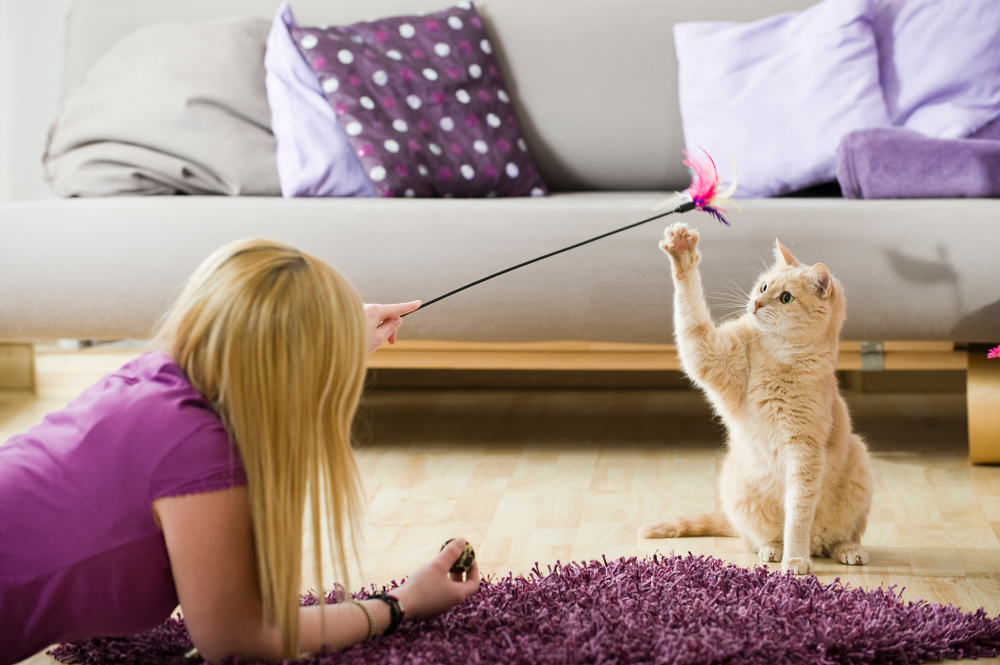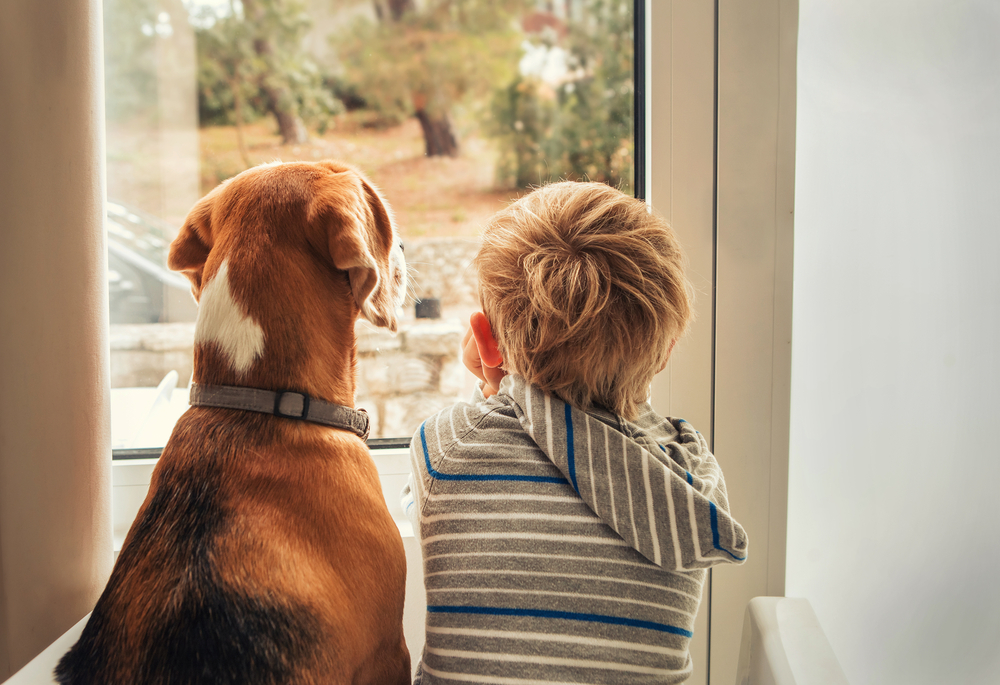Many people adopt pets before starting their family, or they want to add pets to their household so their kids can experience the joys and responsibilities of caring for an animal. Pets with short lifespans, including fish or small mammals, also help teach children valuable lessons about life and death. No matter your reason for expanding the family, consider how you will keep your children and pets safe during their interactions. Some pets are incredibly tolerant and enjoy interacting with kids, while others need time to warm up or prefer to be left alone. Follow our Wellness Animal Hospital team’s tips for keeping your kids safe around your pets and vice versa.
#1: Always supervise child and pet interactions
Supervision is critical to safeguarding children who are interacting with pets. Watch how your pet reacts to your child, and intervene when you see your child inappropriately touching or handling their furry pal. Supervision is essential during the early days of your child and pet’s relationship, and while you may have less reason to intervene as your child grows older and gains a better understanding of your pet’s needs, you should never leave children and pets completely unattended.
#2: Recognize and acknowledge your pet’s body language
Your pet always expresses how they feel, but you must look closely and intentionally to understand what their body language is saying. Pets who display stress signals around children, such as looking away, yawning, or panting in dogs, and vocalizing or tail swishing in cats, are likely uncomfortable. If your child continues the annoying behavior, your pet’s anxiety could increase, causing them to scratch or bite your child. If your pet always seems uncomfortable around your child, you may have a safety issue on your hands and should consult a veterinary behaviorist or force-free pet trainer for advice.
Learn to interpret your pet’s body language and respect their wishes to end or change an interaction. Let your pet leave the situation if they communicate they are done, and teach your children to read and understand their furry pal’s body language and vocalizations so they can develop a strong and respectful bond with their pet over time.

#3: Teach children gentle and respectful pet-handling skills
Teach children that rough handling will hurt their pets, and show them how and on which body part a dog or cat prefers to be greeted and patted first. The best place to touch a dog or cat is on their back, and children should avoid reaching out directly to a pet’s face or touching sensitive areas such as their rear end, belly, or feet. Children should not hug pets, stare directly into their eyes, wake a sleeping pet, or approach their furry pal who is eating or playing with a beloved toy. If you purchased a pocket pet for an older youth, handling skills are vital to prevent the animal from biting your child and to prevent your child from causing their furry pal an injury.
You should also teach your children how to engage appropriately with a pet they do not know. The “be a tree” strategy works well to help children understand they should avoid making quick movements and eye contact if a strange dog approaches them. In addition, instruct children to always ask the pet owner before approaching or touching an unfamiliar pet.
#4: Teach pets coping strategies and provide them with a safe space to retreat
Dogs benefit from learning a few important commands if they live with a child. Dogs should be crate-trained and learn to be comfortable away from you—in a crate or within the confines of a baby gate. Teach your pet to obey a place or mat cue, which is helpful when you want to end an interaction quickly. This command is also beneficial to use if your dog has become overexcited and needs a time-out away from your child. A certified, force-free dog trainer can help you set up your home to accommodate occasional separation and help your dog learn to love their crate.
The crate or another area can also provide your pet a safe retreat if they want to remove themselves from an interaction with a child. Ensure your pet has free access to the area when they are not actively confined. Provide cats with shelving to escape vertically, or use a pet gate with a small cat door so your feline friend can quickly retreat from a child’s area.
#5: Keep pets healthy and teach children proper hygiene
Pets can transmit diseases or parasites to people, and children are most susceptible because they have less-than-ideal hygiene. Vaccinations and routine parasite testing and control are essential to keep your pet and child healthy. You should also clean litter boxes and your yard regularly, and teach children to wash their hands after interacting with pets.
Research shows that children who grow up with pets in their homes are less likely to develop allergies—to pets, pollens, or otherwise—later in life. Pets also teach children responsibility and provide companionship, bonding, and respect for other living beings. Pet ownership’s benefits outweigh the risks in most situations, but parents should ensure they take steps to safeguard interactions between children and their furry pals.
Ensuring your pet is healthy is important for your child’s safety. Schedule your pet’s wellness examination, vaccine boosters, and parasite testing and prevention with our Wellness Animal Hospital team.







Leave A Comment